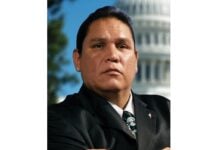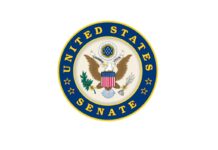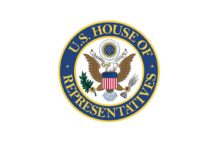Regulation
Tribal gaming is regulated by tribal governments, Congress, the Interior Department, and the National Indian Gaming Commission, as well as by states under the terms of negotiated tribal-state gaming compacts. Other federal agencies enforce laws affecting Indian gaming, including the U.S. Department of Justice, the IRS and the FBI.
Use of Tribal Gaming Revenues
Indian Gaming Regulatory Act requires that tribal gaming net revenues be used in five specific areas:
- To fund tribal government operations or programs.
- To provide for the general welfare of the tribe and its members.
- To promote tribal economic development.
- To donate to charitable organizations.
- To help fund operations of local government agencies providing services to tribes.
A majority of all tribes devote their revenues to tribal government services, economic and community development, charitable donations and contributions to local governments.
The Indian Gaming Regulatory Act of 1988 (IGRA)
Immediately after the California v. Cabazon Band of Mission Indians ruling was handed down in 1987, tribes began operating high-stakes bingo and other gaming programs. State governments, frustrated at their lack of authority over these activities, appealed to Congress for legislation to give them more power over tribal gaming. The result was the Indian Gaming Regulatory Act of 1988 (IGRA).
Contrary to popular perception, the IGRA did not expand the power of tribal governments; in fact, it curtailed them by giving state governments unprecedented authority over tribal gaming activities. The IGRA required tribes to negotiate agreements with states in order to engage in Class III (casino-style) gaming activities.
The IGRA sets forth an economic rationale for Indian gaming on reservations. The major purpose of the Act, according to Congress, was “to provide a statutory foundation for Indian gambling operations as a means of promoting economic development, self-sufficiency and strong tribal government.”
The other purposes of the IGRA were to assure that tribal governments would be the sole owners and beneficiaries of reservation gaming programs; to establish federal regulatory authority and gaming standards; to establish the National Indian Gaming Commission; and to assure the integrity of tribal gaming.
IGRA Classifications of Tribal Gaming
The IGRA established three separate classifications of Indian gaming:
- Class I: Social gaming, such as traditional Indian games played as part of tribal ceremonies and celebrations. Tribes have exclusive authority to regulate Class I gaming.
- Class II: Bingo, pull-tabs and other similar games, including non-banking card games not prohibited by state law. Expressly excluded from Class II gaming are banking card games, such as blackjack, or slot machines of any kind. Tribes have authority to regulate Class II gaming under the jurisdiction of the National Indian Gaming Commission. Self-regulatory ordinances adopted by tribal governments must be approved by the Commission.
- Class III: All forms of gaming that are not included under Class I or Class II, such as blackjack and slot machines. Class III games are legal on tribal lands only if the games are authorized by the governing body of the tribe; the games are located in a state that permits gaming for any purpose by any person, organization or entity; and the games are conducted in conformance with a tribal-state compact entered into by the tribe and the state in which the gaming is conducted. Class III gaming compacts negotiated under the IGRA include stringent provisions ranging from application of criminal and civil laws regarding licensing and regulation of gaming, to standards for the operation of gaming activities, and financial assessments by the state to defray the costs of background investigations or other expenses associated with enforcement of the compacts.
Sovereignty as a Retained Right
Long before there was a United States of America, tribes governed themselves, provided for their people and negotiated treaties with other nations such as England, France and Spain. When tribes signed treaties with the U.S., they were guaranteed the right to continue governing themselves. This means that their sovereign rights are retained, not granted.
Tribes and the Federal Government
Throughout much of the 19th century, federal policy toward Indians and tribal governments was inconsistent. As the 1900’s approached, federal officials adopted a goal of assimilation, and initiated efforts to end the reservation and tribal government system.
Then, in a major policy change enacted between 1880 and 1930, reservations were surveyed and lands deeded to Indian and non-Indian individuals. Tribal land holdings were vastly diminished, and tribal governments were greatly weakened or eliminated. This became known as the “termination” era. Indian children were taken from their homes, moved to federal schools, and barred from using their native language or visiting their reservation homes. During this period, Indian social and economic problems skyrocketed.
The Cornerstones of Tribal Self-Government
In 1934, federal policy changed again with passage of the Indian Reorganization Act, which restored tribal lands and permitted tribes to reorganize under federal law for purposes of self-government. Since 1934, Congress has passed several other landmark statutes to strengthen tribal self-government, including:
- The Indian Civil Rights Act of 1968, which applied most of the Bill of Rights’ requirements and guarantees to Indian tribal governments.
- The Indian Self-Determination and Education Act of 1975, which strongly reaffirmed Congress’ policy that tribal governments should be permitted to control education programs, contracts and grants affecting Indians.
- The Indian Child Welfare Act of 1978, which established federal rules to ensure that Indian children removed from their homes are placed with Indian families whenever possible to preserve cultural values.
- The Indian Gaming Regulatory Act of 1988, which recognizes Indian gaming as a vehicle for achieving economic self-sufficiency on reservations, and details the authority and role of tribal governments, the federal governments and the states in Indian gaming.
- The Indian Tribal Justice Act of 1993, which reaffirmed the responsibility of the U.S. government to tribal governments, including the protection of the sovereignty of each tribal government; and confirmed that Congress, through statutes, treaties and administrative authorities, has recognized the self-determination, self-reliance and inherent sovereignty of Indian tribes.
This information was provided courtesy of the Minnesota Indian Gaming Association. For more information, visit www.mnindiangamingassoc.com.












































